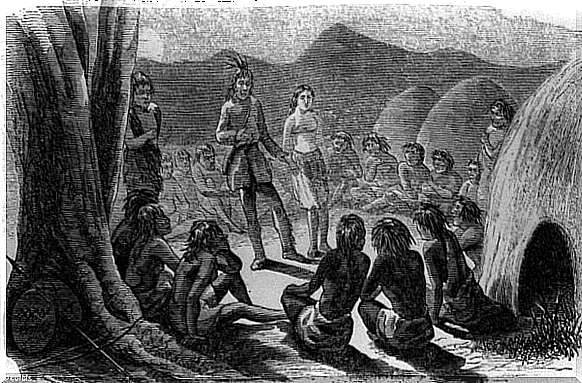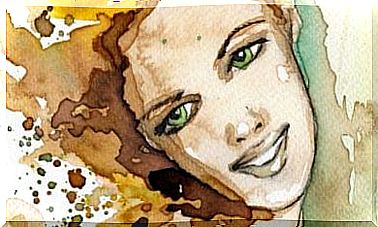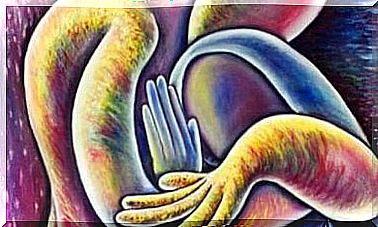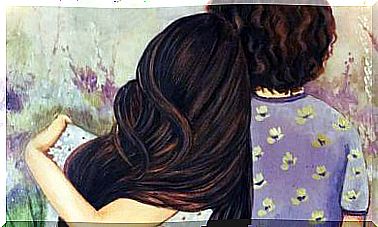Olive Oatman, The Woman With The Blue Tattoo
Olive Oatman is known as the mysterious woman with the blue tattoo on her chin. As a child, she was kidnapped by the Yavapai Indians and later by the Mojave Indians. In the end, her brother saved her. She has devoted part of her life to lectures about her survival and the power people possess.
You may have come across this story before. The serene face of the main character attracts us. But her eyes and especially the wild tribal tattoo contradict her general appearance. It is clear that she is more than a kind, well-bred nineteenth-century lady.
Olive Oatman lived through two tragedies that scarred her for life. First, she lost her family in an attack by the Yavapai Indians. Then the Mojave Indians took her away from her second family.
Olive Oatman was not just an ordinary woman of her time. But she was a woman who went through some severe traumas in her life. She was someone who tried to survive and adapted to every adversity that fate had destined for her. And she certainly did survive. Her prodigious life is collected in the books Captivity of the Oatman Girls (1856) and The Blue Tattoo: The Life of Olive Oatman, by Margot Miffin.
But there’s something in Olive’s life that we don’t often talk about. Olive Oatman has never felt so free as when she lived with the Mojave Indians. Nearly a hundred years later, a small town was even named after her. In this town the young girl lived with the Indians. And interesting to know is that she was happier than ever then.

Olive Oatman, years of captivity, years of freedom
We are in the year 1850, in the arid but majestic landscape of Colorado. In the distance, on a lonely road full of stones, we see a caravan of settlers who make their way with their animals, wagons and the great hope of settling in the ‘new world’. But the new world was already inhabited by its rightful owners. They were not going to just give their land away to these foreign conquerors with their haughty attitude.
Among these ‘foreign conquerors’ was the Oatman family. They were Mormons guided by the fanaticism of their spiritual leader, Pastor James C. Brewster. It was his fiery “rush forward” attitude that inevitably led them to catastrophe.
After all, they knew nothing of these regions. They also refused to listen to the warnings. Their purpose was so strong and their faith so blind that they didn’t realize the land already had owners. And the owners were a wild and fairly violent tribe: the Yavapai.
The Native Americans killed almost all the pioneers who were part of the expedition. Afterwards, they decided to take two girls as slaves: Olive Oatman, fourteen, and her sister Mary Ann, eight.
After the trauma they went through, the two little girls didn’t notice much improvement. They went through nearly a year of abuse, starvation and constant humiliation by the Native Americans who despised the white man so much. But the girls’ luck turned thanks to a neighboring tribe.

Life among the Mojave Indians
This tribe were the Mojave. It was they who made the decision to save the girls through an exchange. They traded several horses for the two captured girls. When the transaction closed, Olive and her younger sister began a new life. This life was completely different from the misery they had been forced to live in.
The Espanesay and Aespaneo families adopted them. The girls were welcomed by a land of beauty, wheat fields and poplar forests. It was a place where they could sleep every night in the company of friendly people.
To show their unity with the community, they got a traditional tattoo. With this tattoo their unity with the others in the afterlife was assured. It was a religious symbol of connection to the Mojave.
Quite a few years passed. Olive mourned the loss of her parents but grew more and more attached to her new family. However, there were also difficult times. Years of drought led to famine and many children died, including Olive’s sister, Mary Ann. Olive was allowed to bury her sister according to her own beliefs. She was given a piece of land where she planted a garden full of wild flowers.
Olive Oatman’s Invisible Tattoo
Olive Oatman was nearly twenty years old when a messenger from Fort Yuma arrived in the city of the Mojave. They had learned that a white woman was present and demanded her return.
It should be noted, however, that the young girl was never held captive by the Mojave. They always told her she was free to leave whenever she wanted. But Olive had never shown any particular interest in returning to what the white man called civilization. Her life was good. She was happy.
However, she changed her mind when she discovered that it was Laurence who asked her to return. Laurence was her little brother. She thought he had been killed in the brutal attack by the Yavapai. So she decided to leave the Mojave and go back to her brother. It was a difficult decision. Years later, she would regret that decision.

The woman with the blue tattoo
This is how she became the ‘woman with the blue tattoo’. Because they immediately tried to cover her with a Victorian dress, but it couldn’t hide the tattoo on her chin. What not everyone knew, however, was that her arms and legs also had striking tattoos. But they never saw the sunlight of Colorado again.
After her return to civilization, things moved very quickly for Olive Oatman. Someone wrote a book about her story. She was offered a share of the copyrights. She took advantage of that. The money helped her study at a university and paid for her brother’s training. Later, she began to lecture all over the United States. She spoke of her experience with the Yavapai and with the Mojave.
The book contained anecdotes about the cruelty of the Native Americans, their ignorance and their inhumanity. The same was true for the lectures because that was what people expected to hear. Under pressure, Olive had to lie so she could survive in the city that welcomed her into her new life.
A new life, another form of captivity
In 1865 she married a wealthy cattle breeder. All he asked was that she forget her past. He asked her to leave the lectures behind and cover the tattoo with a veil. She did and she let time pass, drop by drop, year after year.
She submitted to what may have been the worst slavery of her life. So she ended up with a new tattoo: the pain and memory of all those years at the Mojave, where she was free and happy…
Olive Oatman spent much of her life with severe headaches and depression. She has even spent time in some Canadian hospitals. There they tried to cure her of her longing for her other family, the Mojave. She died at the age of sixty-five.









